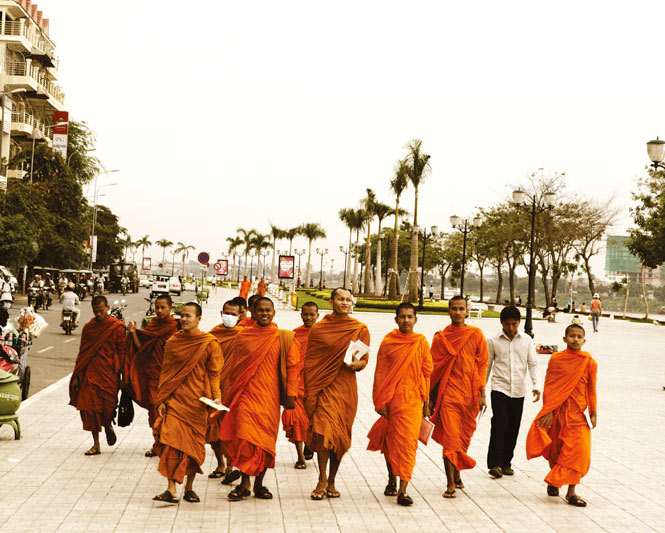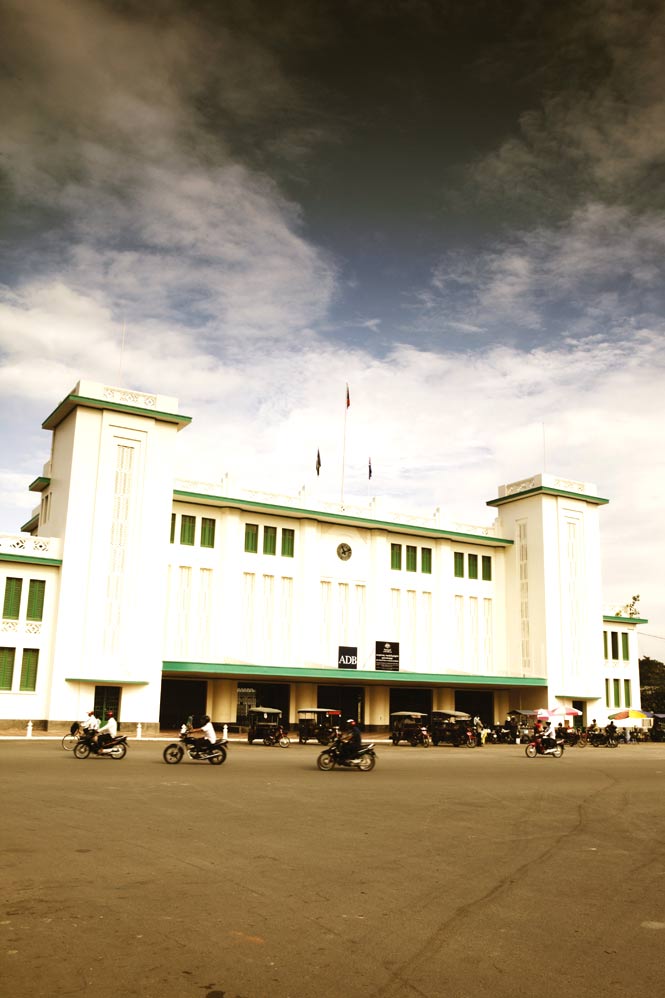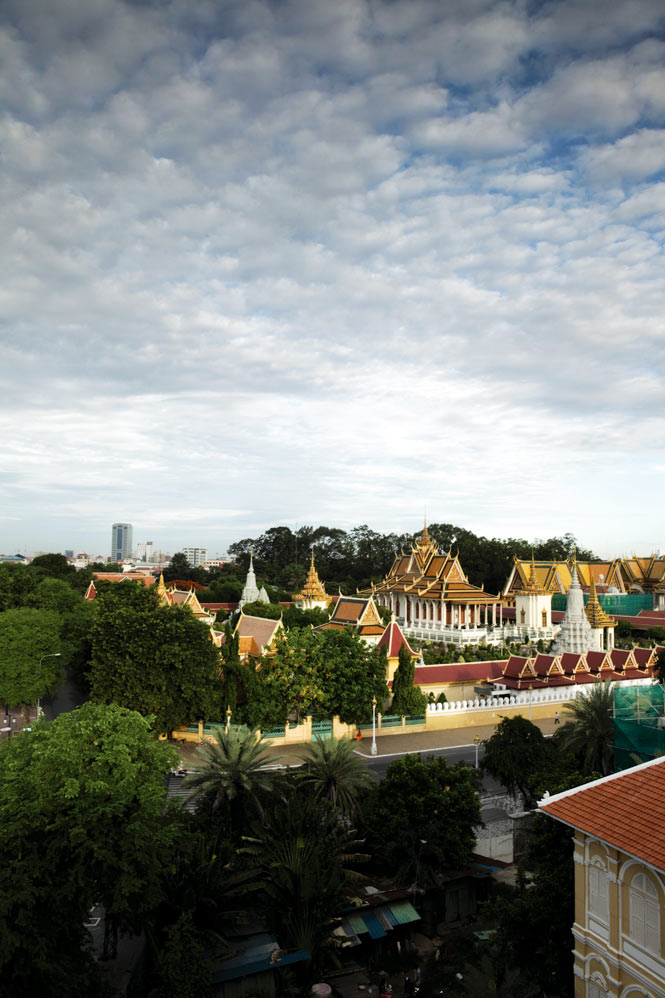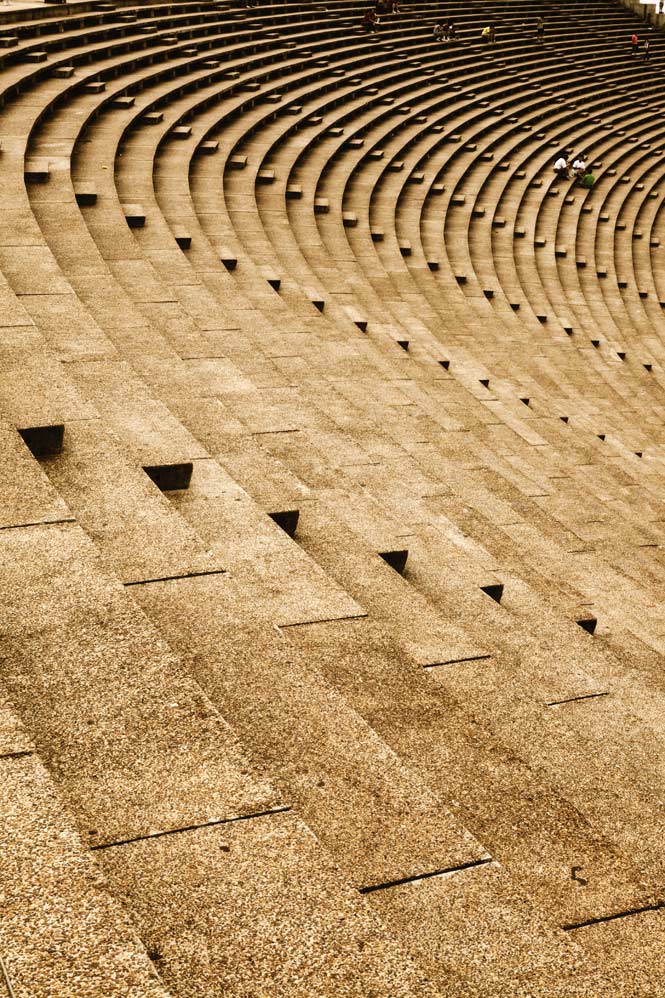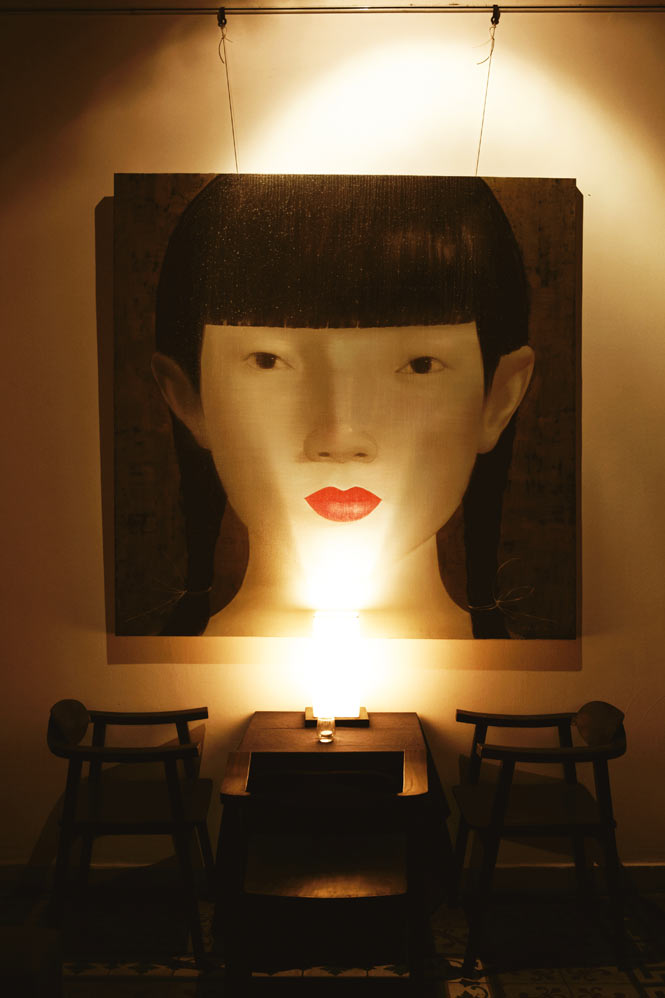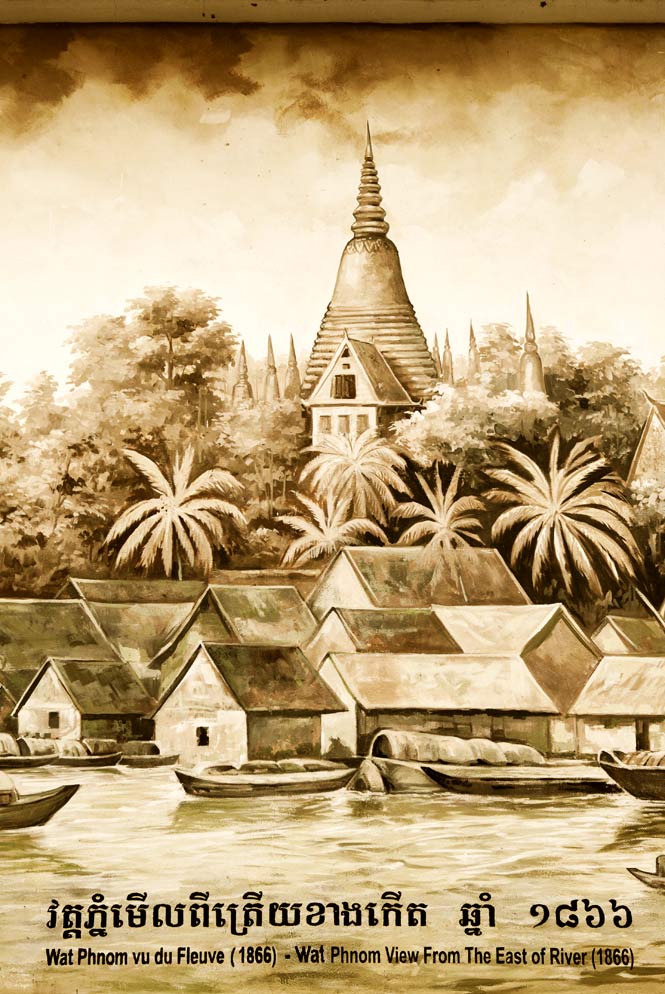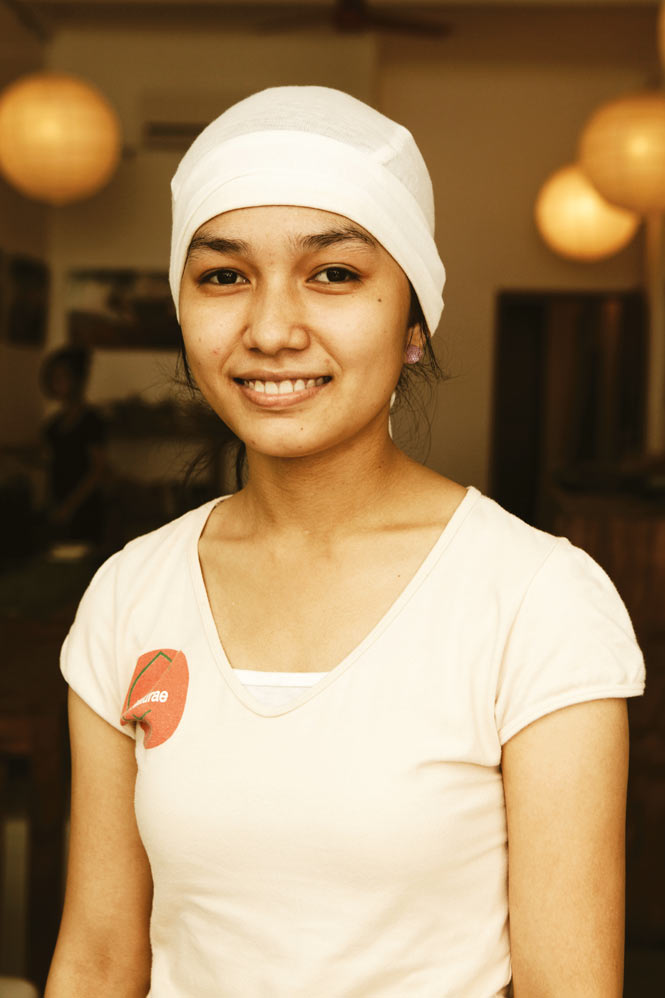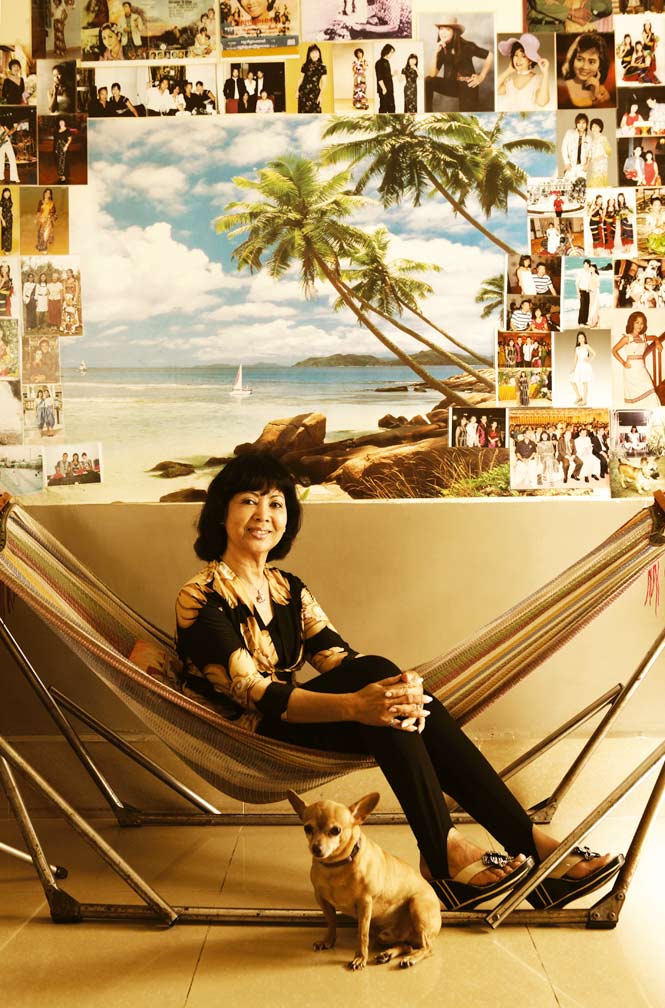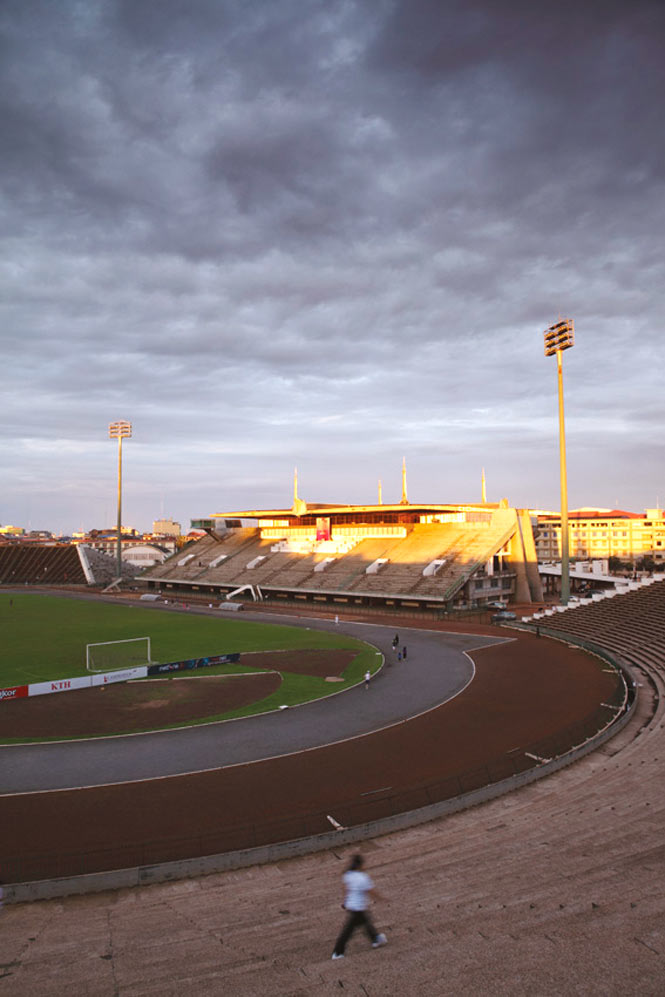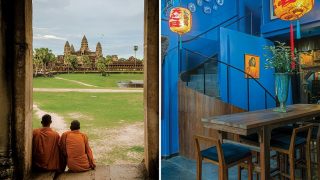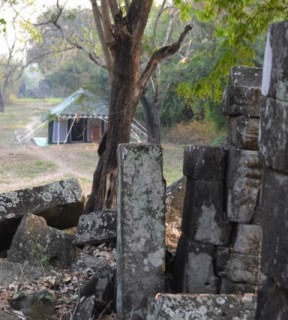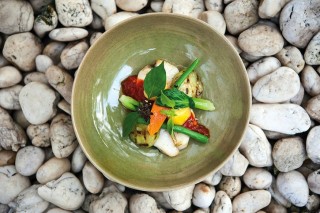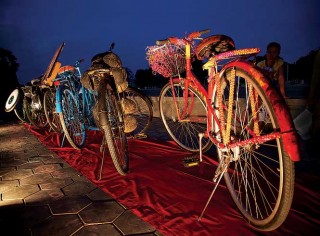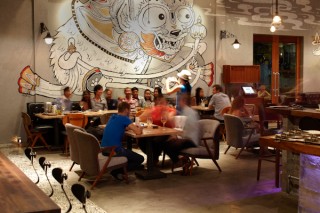“People come to Cambodia to experience some kind of authenticity, so we try to preserve the original structures as much as we can. Our goal is to give you the feeling of a unique place in a world of globalization,” de Suremain said. He’s also experimenting with solar-powered floating bungalows that he hopes will form the basis of a future eco-hotel.
This spirit of adventure can be seen throughout the city, especially in the procession of restaurants and bars that are constantly opening. One of the best is Yumi, an open-air take on the Japanese izakaya established in late 2009 by chef Caspar von Hofmannsthal, formerly of London’s hip Quo Vadis. While an Englishman serving Western-accented Japanese bar food wouldn’t necessarily make sense in Tokyo or London, it’s a perfect fit in wide-open Phnom Penh, where a cosmopolitan crowd of aid workers and diplomats craves experimentation. With its small plates of addictive Japanese-style ribs and delectably crunchy lotus-root-and-green-bean salad, Yumi has quickly become one of the city’s most popular places to eat.
Yumi is located in Boeung Keng Kang, the leafy, villa-strewn expat district that is one of two nexuses of the city’s growing cultural and nightlife scenes. The other is Sisowath Quay, on the Tonle Sap River, not far from the elegantly spired halls and pavilions of the Royal Palace (built by the newly ensconced French in 1866). This chaotic waterfront promenade captures the pulse of Phnom Penh better than any other area of the city.
On a recent night, as the setting sun left pink and orange streaks in the twilit sky, the area hummed with teenagers on motorbikes cruising the riverside in search of friends. Straw-hatted street vendors did brisk business as backpackers and European families sipped Angkor drafts in open-air cafés and bars. Set in a handsome colonial building, the Foreign Correspondents’ Club, which catered to Western journalists in the turbulent early 1990s, was packed with tourists and aid workers soaking up the cool river breeze over drinks and dinner.
Above, from left: sunrise over the Tonle Sap River; a mahout and his charge making their way along Sisowath Quay; canvases from Leang Seckon’s “Shadow of the Heavy Skirt” in the artist’s gallery; early morning at the National Sports Complex.
On the opposite, less-developed side of the water, a commotion of a different sort was taking place. Construction workers were busy laying the foundation and beams of the planned Sokha Hotel and Convention Center, a 798-room behemoth that will occupy a prime piece of real estate at the confluence of the Tonle Sap and Mekong rivers. The US$100 million complex, which will open in 2012, is a symbol of what Phnom Penh is becoming—a major tourist destination with five-star facilities to match. But it also speaks to what the city is in danger of losing.
As developers pour millions of dollars into the area, dozens of poor families and small businesses have been forced out due to rising rents. The artist Leang Seckon has seen his own neighborhood on the banks of Boeung Kak Lake nearly disappear due to large-scale development. While he is happy to see signs of progress, he is cautious. “I want there to be other types of architecture, too. I hope we can find a way to keep some of the old things in the city,” he said.
As the sun sank from view, the cranes at the Sokha site continued to whir and twirl. Across the river on Sisowath Quay, the sounds were audible, but they seemed far away for now.
THE DETAILS:
Phnom Penh
Getting There
Phnom Penh is well connected with most major regional cities.
Where to Stay
- Raffles Hotel Le Royal
The city’s grande dame. 92 Rukhak Vithei Daun Penh, Sangkat Wat Phnom; 855-23/981-888; raffles.com; doubles from US$235. - The Pavilion
227 St. 19, Khan Daun Penh; 855-23/ 222-280; thepavilion.asia; doubles from US$40. - Sofitel Phnom Penh Phokeethra
The first new five-star hotel to open in the capital in more than a decade. 26 Old August Site, Sothearos Blvd.; 855-23/999-200; sofitel.com; doubles from US$145.
Where to Eat
- Yumi
29a St. 288; 855-92/ 163-903. - Armand’s
The Kampot-pepper steak flambéed in brandy is a highlight of this this cozy French bistro. 33 St. 108; 855-15/548-966. - Tepui
A South American– inspired restaurant and lounge at the Chinese House. 45 Sisowath Quay; 855-23/991-514. - Malis
The city’s most elegant option for Cambodian cuisine. 136 Norodom Blvd.; 855-23/221-022.
Where to Shop
- Artisans d’Angkor
A fine selection of Khmer handicrafts, from lacquerwork to stone carvings.
12A, St. 13; 855-23/ 992-409; artisansdangkor.com - Ambre
Fashion and accessories by Paris-trained designer Romyda Keth.
37 St. 178; 855-23/ 217-935; romydaketh.net. - Water Lily
Christine Gauthier’s treasure trove of eccentric jewelry.
37 St. 240; 855/12-9812-469; waterlilycreation.com.
What to See
- Central Market
Corner of Sts. 67 and 136. - Chinese House
45 Sisowath Quay; 855-23/991-514; chinesehouse.asia - Royal Palace
Samdech Sothearos Blvd, between Sts. 240 and 184. - National Museum of Cambodia
Corner of Sts. 178 and 13; cambodiamuseum.info.
Originally appeared in the August/September 2011 print issue of DestinAsian magazine (“Phnom Penh, Again”)

